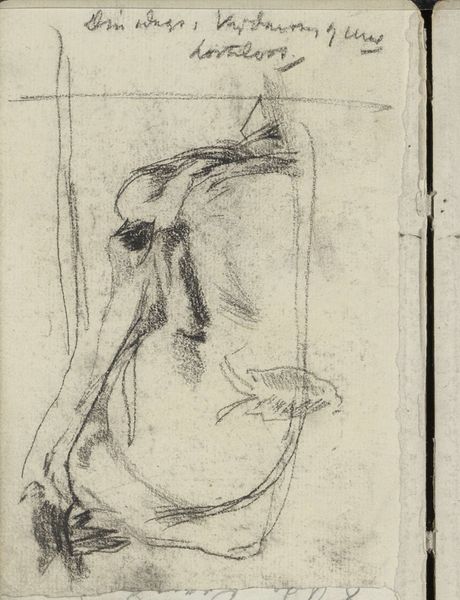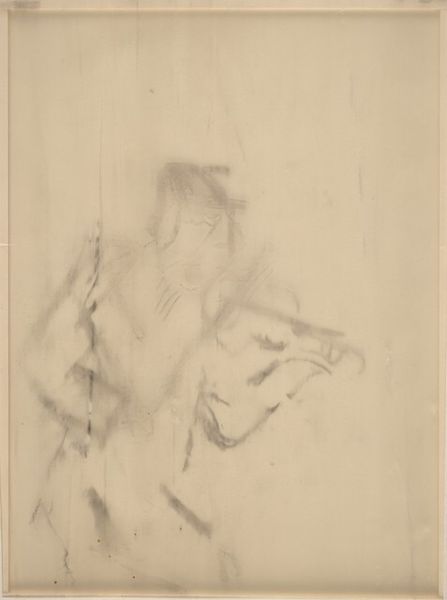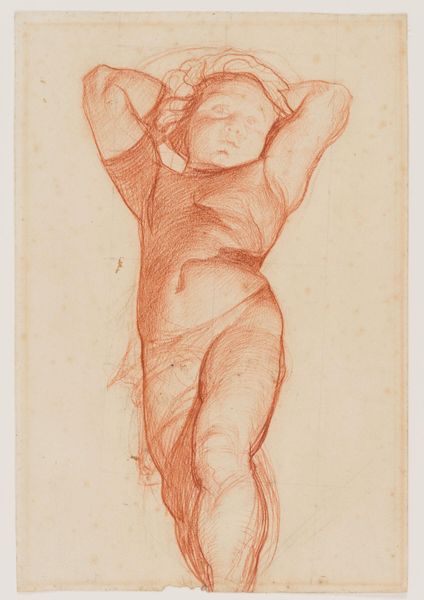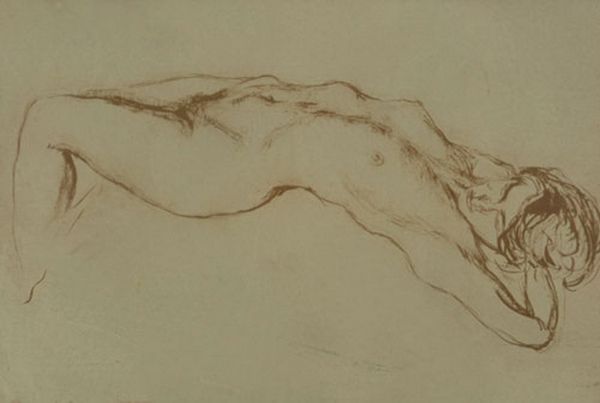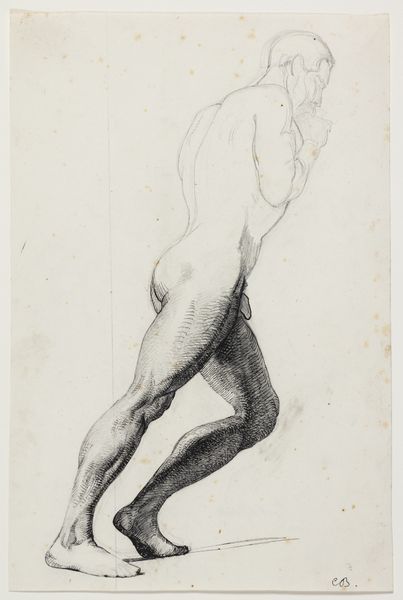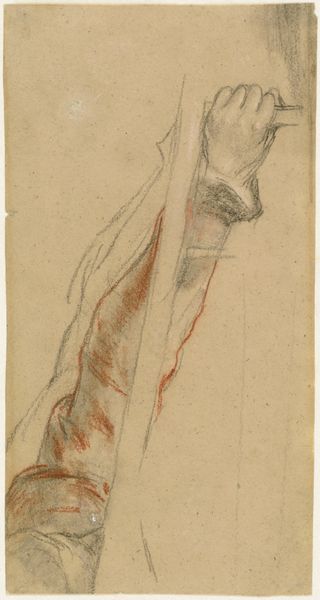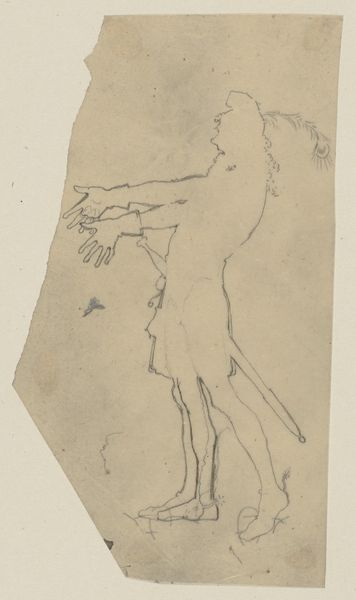
drawing, dry-media, charcoal
#
portrait
#
drawing
#
charcoal drawing
#
figuration
#
dry-media
#
charcoal
#
academic-art
Dimensions: overall: 47.2 x 32.2 cm (18 9/16 x 12 11/16 in.)
Copyright: National Gallery of Art: CC0 1.0
Curator: Leo Katz’s 1911 “Anatomy Studies” is a compelling drawing rendered in what appears to be red chalk. The composition is rather fragmented—isolated studies of a leg, a foot, and a muscular arm dominate the picture plane. Editor: The fragmented nature gives me the impression of witnessing a reconstruction, or perhaps deconstruction, of the human form itself. I immediately feel drawn into the materiality of this form through these specific angles. Curator: Precisely! Let’s delve deeper into this sense of reconstructing the human form. Academic art during that time often emphasized the idealization of the human body. Considering this, what political or social messages are implicit through Katz's depiction of the human figure? Editor: Well, look closely at the artist's technique and material. There are many charcoal or chalk anatomical studies from the time. I'm particularly interested in the labor and the process involved in bringing this piece together. What does it mean to painstakingly build up these forms using a material like chalk on what seems like aged paper? This invites us to consider the means of art production. Curator: That's a really salient point. Katz's choice of red chalk, almost evoking the presence of blood, introduces an unexpected layer. It's not just an academic study; the red chalk introduces emotion into a formal piece. What happens to traditional art studies when materials push it towards raw emotionality and realism? Editor: Absolutely, there's also something profound in the study of muscles, the mechanics of motion. You see here the tools and material needed for this type of precise drawing. The physical strain the body endures resonates through those deep marks that capture muscles. We need labor to analyze labor. Curator: And those ghostly underdrawings--they reveal a lot about the layers of meaning. Katz seems to deliberately leave parts unresolved. It challenges the viewer to question conventional academic beauty and move towards new modes of representation. Editor: It prompts a question regarding what exactly "accurate" depictions are and how they connect to contemporary understanding of what the body represents. Curator: It leaves me thinking about the ever-changing dialogue between tradition, identity, and the politics inherent in visualizing the human form, particularly in early 20th century art. Editor: I agree. By taking material seriously, we engage not only in interpreting forms, but in unveiling underlying modes of production behind artworks such as this one.
Comments
No comments
Be the first to comment and join the conversation on the ultimate creative platform.

